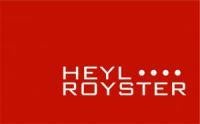I. The Importance of Appearance
There is clearly a legitimate business interest in employee appearance, and employers realize that attractiveness sells. Attractive individuals with a professional appearance have been found to be more effective in influencing people, which can lead to an increase in sales. Employers will also consider an applicant's appearance during the hiring process. An individual's appearance forms the basis of a first impression and affects perceived characteristics such as intelligence, motivation, wealth, and overall capability. It is a natural response to associate attractive individuals with better lifestyles, careers, and education. Physical appearance is a powerful influence in modern society, so it should be no surprise that employers are more likely to hire physically attractive individuals and exclude individuals who do not appear to "fit in."
There has been a significant increase in appearance-based discrimination claims addressing makeup, dress codes, and body art in the past several years. However, existing jurisprudence does not automatically prohibit appearance-based discrimination in the workplace. No comprehensive state or federal law prohibits an employer from making adverse employment decisions when an employee or prospective employee is too heavy or too thin, has unconventional body art, or is generally unattractive. As a result, aggrieved employees occasionally attempt to link their nonviable appearance-based claims to cognizable Title VII claims. Similarly, some litigants prosecute their appearance-based grievances as disability or age discrimination claims.
II. Appearance Guidelines & Corresponding Cases
Employers institute dress codes and appearance guidelines to guarantee a minimum appearance standard and regulate appearance in the workplace. Accordingly, employers argue that they should have the discretion to regulate workplace appearance so long as their business decisions do not violate Title VII. An employer's right to implement a dress code was addressed in Seabrook v. City of New York, 1999 U.S. Dist. LEXIS 13729 (S.D.N.Y. 1999), aff'd, 210 F.3d 355 (2000). In that case, Sandra Seabrook, a female Department of Corrections (Department) officer, filed a class action lawsuit seeking injunctive relief alleging that the Department's dress code, which required both male and female officers to wear trouser pants, violated her rights under the First and Fourteenth Amendments to the United States Constitution, as well as the New York State Constitution. To augment their claim, the plaintiffs alleged that their religious beliefs prohibited them from wearing pants. However, the Department argued that the dress guidelines were implemented for safety reasons. The court accepted the Department's nondiscriminatory reason for its dress code and agreed that if the plaintiffs were in skirts, they could not be in a position to respond to an emergency because the safety gear was designed to be worn with trouser pants, not skirts. The court concluded that female officers, like all other Department of Corrections officers, had to be physically capable of fitting into safety clothing in the event of an emergency. The court recognized that the Department should be afforded great latitude in determining its dress code and denied the plaintiffs' request for injunctive relief.
In seeking to maintain control over employee appearance, employers have also adopted "body art work policies" in an attempt to prohibit body modification. In most instances, body art or modification is only decorative in nature. However, in some instances, it may be associated with protected categories such as race, ethnicity or religion. For example, in Riggs v. City of Fort Worth, 229 F.Supp.2d 572 (N.D. Tex. 2002), a police officer with tattoos covering his arms and legs was required to cover them while on duty, despite his freedom of expression argument. Michael Riggs (Riggs) alleged that he was discriminated against when he was removed from the bike patrol unit and ordered to wear long sleeves and long pants. Following his transfer, the chief of police wrote Riggs a letter explaining that his arm and leg tattoos detracted from the professionalism of a Fort Worth police officer. The district court agreed with the police department that Riggs' tattoos were unprofessional and unprotected by law. The court reasoned that the uniform requirement and job reassignment were not based on the officer's race, gender or national origin. Therefore, his claims against the City of Fort Worth were dismissed.
Because tattoos are not usually a protected characteristic, some creative claimants may suggest that policies prohibiting display of tattoos in the workplace infringe upon the claimant's protected religious rights. That very issue was examined in Swartzentruber v. Gunite Corp., 99 F.Supp.2d 976 (N.D. Ind. 2000). Sheldon Swartzentruber (Swartzentruber) was a factory worker for the defendant, Gunite Corporation (Gunite). As an active member of the Ku Klux Klan, Swartzentruber proudly displayed a tattoo on his forearm of a hooded figure standing in front of a burning cross. After several black employees complained that the tattoo was offensive and threatening, the personnel manager concluded that the tattoo contributed to a hostile work environment and warned Swartzentruber to cover the tattoo while at work. Swartzentruber did not tell the personnel manager that his tattoo was religious in nature or that his religious beliefs required him to display the tattoo at work, yet he refused to keep his tattoo covered. He subsequently filed a Title VII claim alleging that Gunite discriminated against him by not accommodating his religious beliefs by forcing him to cover his tattoo. Gunite's motion for summary judgment was granted, and Swartzentruber appealed. In affirming the summary judgment, the district court held that Gunite reasonably accommodated Swartzentruber's asserted religious beliefs by requiring him to cover his tattoo. The court concluded that any alternative accommodation would have imposed an undue hardship on both the employer and its employees. Swartzentruber was also unable to demonstrate that his work environment was both subjectively and objectively hostile, and therefore he had no claim for hostile environment harassment.
Often, employment policies also include provisions limiting or restricting jewelry in the workplace because certain jewelry detracts from a uniform and professional image. An employee's desire to wear jewelry was advanced as a religious discrimination claim in Cloutier v. Costco Wholesale Corp., 390 F.3d 126, 128 (1st Cir. 2004). Kimberly Cloutier (Cloutier) alleged that her employer, Costco Wholesale Corp. (Costco), failed to offer her a reasonable accommodation for her facial jewelry that was required by her religious practice as a member of the Church of Body Modification. Before her first day of work, Cloutier received a copy of the Costco employment agreement, which included the employee dress code. When she was hired, Cloutier had multiple earrings and four tattoos, but no facial piercings. Throughout her time at Costco, Cloutier engaged in various forms of body modification, including facial piercing and skin cutting, which she admitted were not motivated by a religious belief. Costco revised its dress code to prohibit all facial jewelry, excluding earrings, but Cloutier disregarded the new policy. Cloutier was warned repeatedly to abide by the no-facial-jewelry-policy but she refused to comply and was eventually terminated. Thereafter, she filed a religious discrimination complaint with the Equal Employment Opportunity Commission (EEOC). Costco was granted summary judgment and Cloutier appealed. The court of appeals affirmed and held that it would place an undue hardship on Costco to allow a cashier to wear facial jewelry. The court reasoned that Costco had a legitimate interest in presenting a reasonably professional appearance to customers. As a cashier, Cloutier had regular interaction with customers, and her facial piercings detracted from the professional image that was within Costco's discretion. Given the circumstances, Cloutier's religious discrimination claim failed.
Cloutier, like other creative litigants, attempted to link her unprotected characteristic to a protected category, by claiming her facial piercings were related to religious practices encouraged by the Church of Body Modification. Some religions may require or encourage body modifications, and if legitimately so, those practices may be protected.
III. Tips for Employers
Courts are reluctant to interfere with employers' business judgments when imposing grooming and appearance standards. However, policies regulating appearance must not have a disparate impact on any particular protected class regardless of the employer's intention. Thus, employees and former employees are bringing lawsuits alleging violations of Title VII and state employment statutes, but claimants will only be successful if they can satisfy specific elements of existing civil right statutes. Not surprisingly, aggrieved employees occasionally attempt to link their nonviable appearance-based claims to cognizable Title VII claims, disability or age discrimination claims. The majority of appearance-based discrimination claims fall into two categories: those based on the effects of employer dress codes, grooming standards, or other appearance-based requirements, and those based on the effects of co-worker reactions to the appearance of the grievant. The judicial system is susceptible to this manipulation when claimants mischaracterize legitimate regulation of the workplace as an attempt to discriminate for an unlawful purpose.
As appearance-based lawsuits become more prevalent, employers who want to maintain a professional atmosphere through appearance policies must come to understand the issues that will arise as a result of these policies and how they can position themselves to avoid litigation. Business leaders should establish a work environment that has clear rules that apply to all employees to augment their ability to attract and retain talented employees. Human resource policies established by business owners should ensure that all employees are being judged on their performance and not on their appearance. Employees must realize that personal appearance decisions (such as exposing tattoos and piercings or having unconventional hairstyles) may legally impact their employment opportunities. Without clear direction from the existing statutes, employers should be particularly careful in addressing appearance-based issues. In forming any dress code or appearance policy, employers should adhere to the protections encompassed in Title VII. More importantly, employers have greater chance to avoid appearance-based claims if they institute clear appearance policies enforced in a non-discriminatory fashion.



 i
i